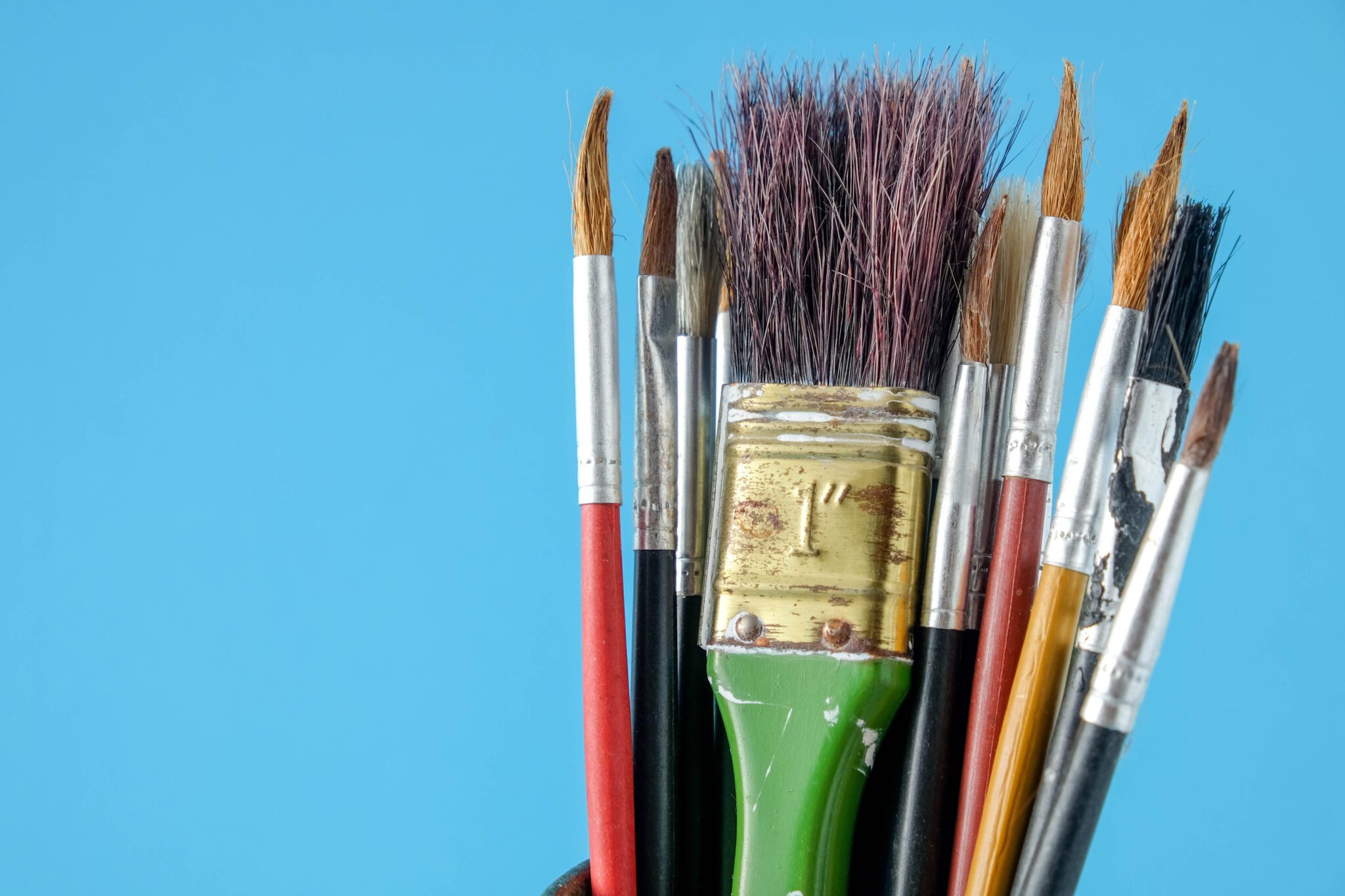The square brush, often referred to as a flat or chisel brush, is a versatile tool beloved by many acrylic artists for its ability to create bold color fields and dynamic textures. With its straight edges and firm bristles, the square brush is particularly effective for achieving sharp lines, vibrant washes, and significant coverage. In this guide, we’ll delve into the characteristics of the square brush, its best uses, and techniques that make it ideal for working with bold color fields.
1. Understanding the Square Brush
The square brush features a flat, rectangular head with stiff bristles that make it distinct from other brush shapes like rounds or filberts. Key attributes include:
- Straight Edges: The straight edges allow for precise applications, making it easier to create sharp lines and defined shapes.
- Controlled Stroke: The firm bristles provide excellent control, allowing for both broad strokes and fine details.
- Versatility: The square brush can be used for various techniques, from smooth washes to textural effects.
2. Best Uses for the Square Brush
The square brush excels in several applications, particularly when working with bold colors and large areas:
- Bold Color Fields: The ability to lay down large swathes of color swiftly makes the square brush ideal for creating vibrant backgrounds and striking elements in your artwork.
- Edge Work: Perfect for crisp, clean lines, the square brush can delineate shapes and forms effectively without blurring.
- Texture Creation: Use the square brush to create various textural effects, such as stippling, cross-hatching, and other techniques that enhance the visual depth of your painting.
3. Techniques for Using the Square Brush
Here are some effective techniques to maximize the potential of the square brush when working with bold color fields:
a. Blocking In Color
- Fill Large Areas: Use the square brush to quickly block in large areas of color. Load your brush with a generous amount of paint, and use the flat side to push the paint into the canvas, ensuring even coverage.
- Layering Colors: After the first layer has dried, you can layer additional colors on top. The firmness of the square brush allows you to maintain vibrant colors without muddying the underlying layers.
b. Creating Textures
- Stippling Technique: Use the corners of the square brush to create stipples or dabs of paint, producing a textured effect. This technique works well for depicting foliage, clouds, or abstract textures.
- Scraping and Dragging: For a more dynamic texture, try scraping the brush across the canvas after loading it with paint. This can create interesting patterns and visual effects, particularly in abstract works.
c. Blending and Transitioning
- Smooth Gradations: To create smooth color transitions, load the brush with paint and position it at the junction of two colors on the canvas. Use the flat edge to blend lightly, working back and forth to achieve a seamless blend.
- Layering Washes: When creating background fields, apply a thinned-down wash of paint with the square brush, allowing for subtle shifts in color. Once dried, you can layer additional washes to achieve depth with bold colors.
4. Color Mixing and Preparation
- Preparation: Before diving into painting, mix your colors on the palette to ensure a robust and consistent appearance. The square brush can be excellent for mixing, thanks to its even surface.
- Vibrancy: Use high-quality acrylic paints for intense and bold color application. The square brush can help you achieve uniform application, maximizing color vibrancy.
5. Cleaning and Maintenance
To ensure the longevity and effectiveness of your square brush, regular cleaning and maintenance are vital:
- Immediate Cleaning: Clean the brush immediately after use with soap and water to prevent paint from drying in the bristles and affecting performance.
- Reshape the Bristles: After washing, reshape the bristles while they are still wet to maintain their form. Allow the brush to dry flat or hanging for the best results.
- Proper Storage: Store your brushes upright or in a protective case to avoid damage to the bristles.
6. Practical Applications
- Abstract Painting: The square brush is particularly effective in abstract compositions, where bold, flat fields of color are essential. Experiment with combining colors and layering them for visual interest.
- Landscapes: When painting landscapes, the square brush can create bold sections for fields, skies, and water. Utilize its sharp edges for creating defined elements like mountains or buildings.
- Filling Patterns: Use the square brush to create patterns or repeated elements, such as tiled surfaces or graphics, that require uniform color application.
7. Conclusion
The square brush is a powerful tool for achieving bold color fields and dynamic textures in your acrylic paintings. By mastering the techniques outlined in this guide, you can take advantage of the square brush’s versatility and elevate your artwork with vibrant forms and structured designs.
Don’t forget to explore our selection of square brushes and other essential art supplies available at urartstudio.com to support your creative journey!
Be sure to visit our online store at https://urartstudio.com/shop/ for a variety of art supplies and tools. Additionally, check out valuable painting tips at urartstudio.com/painting-tips/ and our step-by-step painting instructions at https://urartstudio.com/step-by-step-painting-instructions/ to further enhance your skills.
Keywords: square brush, acrylic painting, bold color fields, techniques, art supplies.
#SquareBrush, #AcrylicPainting, #BoldColorFields, #PaintingTechniques, #ArtSupplies



Leave a Reply
You must be logged in to post a comment.